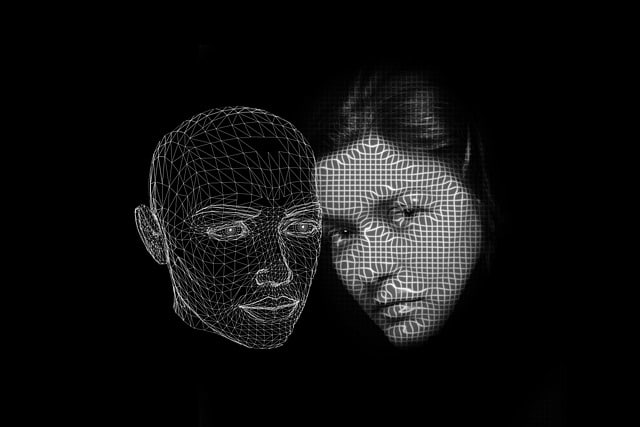Perception, in its simplest form, is our sensory experience of the world around us and involves both recognizing environmental stimuli and actions in response to these stimuli. Through the perceptual process, we gain information about the properties and elements of the environment that are critical to our survival. But as intrinsic as this process is to our existence, it can also be a veil that obscures an objective understanding of reality, shaping it instead to fit our unique cognitive structures and experiences. This article delves into the intricate world of perception, explicating the mechanisms that underlie it, the subjective realities it creates, and the critical insights we gain by understanding that perception is just that – a perception.
The Conceptual Framework of Perception
Exploring how our senses contribute to perception
Perception begins with our senses. Each of the five senses (sight, hearing, smell, taste, and touch) collects raw data from the environment to help us construct an understanding of the world. Sight perceives light, color, and movement; hearing perceives sound vibrations; smell and taste perceive chemical compositions; touch perceives pressure, temperature, and pain. These raw data, however, are meaningless until they are processed and interpreted, which brings us to the role of the brain in shaping perception.
The role of brain processing in shaping perception
The brain serves as the mastermind behind our perception. It receives sensory data, processes it, and interprets it, creating a coherent, understandable model of our surroundings. For instance, when you see a dog, light reflects off the dog into your eyes, which convert this light into electrochemical signals. These signals travel to your brain, which then processes the information to identify the shape, color, and other attributes of the dog. This process is not passive; the brain actively seeks patterns and applies previous knowledge and experiences to interpret the sensory data. It’s like a detective sifting through clues to solve a mystery.
How personal experiences and cultural factors influence perception
Our perception isn’t just influenced by raw sensory data and brain processing; it’s also heavily shaped by our past experiences, beliefs, and cultural background. Two people might perceive the same painting differently because they’ve had different experiences and cultural exposures that influence their interpretation. A nature lover might be drawn to the landscape details, while an art enthusiast might focus on the technique or the historical context of the painting. The fact that our perception is so deeply personal and variable hints at the subjectivity of perception, which we will explore next.

Unraveling the Idea of Perception as a Singular Reality
Addressing common misconceptions about perception being absolute
The belief that our perception is an accurate reflection of reality is a common misconception. This belief stems from the fact that we rely heavily on our perception to interact with and understand our environment. However, given the influence of individual experiences and cultural factors on perception, it’s clear that our perception is more of a subjective interpretation of reality rather than an objective representation.
Illustration of how perception can be subjective and differs from person to person
Perception’s subjectivity becomes evident when we consider how different people can perceive the same event differently. For instance, consider a glass filled halfway with water. Some people might perceive it as half-full, representing an optimistic viewpoint, while others might perceive it as half-empty, indicating a more pessimistic perspective. These differences in perception demonstrate that our perception is shaped not only by the sensory input we receive but also by how we interpret that input based on our individual cognitive frameworks and emotional states.
Techniques for Recognizing Perception as Merely Perception
Mindfulness practices for perceiving without judgment
Recognizing that perception is just a perception requires us to consciously practice non-judgmental observation of our environment and our internal experiences. Mindfulness, a form of meditation rooted in Buddhist philosophy, encourages just that. It involves intentionally paying attention to our present moment experiences with openness, curiosity, and a willingness to be with what is. Through regular mindfulness practice, we can train ourselves to notice our perceptual biases and observe them without getting caught up in them.
Cognitive restructuring: challenging and changing personal perceptions
Cognitive restructuring is another powerful tool for acknowledging and altering our perceptions. This cognitive-behavioral technique involves identifying negative or unhelpful thoughts (cognitive distortions) and challenging their validity. The goal is to replace these distortions with more accurate and beneficial thoughts, thereby changing our perception of the situation. This technique is often used in psychotherapy to help clients manage mental health disorders like depression and anxiety but can also be beneficial for anyone looking to improve their understanding of their perceptions.
The power of perspective shifting exercises
Shifting our perspective is a valuable exercise in recognizing that our perception is not absolute. This can be as simple as considering a situation from another person’s viewpoint or imagining how we might view a situation if we had different experiences or beliefs. By trying on different “lenses” or perspectives, we can start to see the flexibility and subjectivity of our perception, helping us to recognize that it is just one of many possible interpretations.

Case Studies: Instances Where Perception Was Revealed to Be Just a Perception
Case Study 1: The power of placebo effect in medical treatments
The placebo effect is a fascinating example of how our perception can shape our physical reality. This phenomenon occurs when a person experiences a perceived improvement in their condition after receiving a treatment that is inactive or has no therapeutic effect, like a sugar pill. The person’s belief in the treatment’s effectiveness, influenced by their perception, is what leads to the improvement. This case study highlights that our perception can create powerful physiological changes, even when disconnected from objective reality.
Case Study 2: Cultural relativity and how it affects perception of behaviors and norms
Cultural relativity is the idea that a person’s beliefs, values, and practices should be understood based on that person’s own culture, not judged against the criteria of another. Perception of behaviors and norms can vary dramatically from one culture to another. What is considered polite in one culture might be viewed as rude in another. Recognizing these differences helps to highlight that our perception of norms is not an absolute standard but rather a construct influenced by our cultural conditioning.
Case Study 3: Optical illusions and the power of visual perception
Optical illusions are another compelling example of how perception is not always an accurate reflection of reality. These illusions occur when our brain misinterprets visual data, leading us to perceive something that doesn’t match the physical reality. For instance, in the famous Müller-Lyer illusion, two lines of equal length appear to be of different lengths due to the orientation of arrows at the ends of the lines. This illusion demonstrates how even our basic sensory perception can be influenced by contextual cues, leading to inaccurate interpretations.
Implications of Understanding That Perception is Merely Perception
Benefits of this realization in personal relationships
Understanding that perception is merely perception can greatly enhance our interpersonal relationships. It encourages empathy and understanding as we realize that others may see things differently from us, not because they are wrong, but because they have different perceptual frameworks. This realization can open the doors for more effective communication, conflict resolution, and mutual respect.
Impact on mental health and well-being
Recognizing the subjectivity of our perception can also have profound implications for our mental health. By understanding that our negative thoughts and feelings are a product of our perception, not an objective truth, we can learn to challenge and change them, potentially reducing symptoms of mental health disorders and improving our overall well-being.
Significance in societal and cross-cultural understanding
On a broader scale, understanding that perception is merely perception can contribute to societal and cross-cultural understanding. It reminds us that our beliefs and norms are not universally applicable, fostering greater tolerance and appreciation for diversity.
Conclusion
As we navigate our lives, it is crucial to remember that perception is just a perception. Our perceptions are subjective interpretations of the world, colored by our senses, brain processing, personal experiences, and cultural backgrounds. By understanding this, we can start to see beyond our perceptual biases, opening ourselves to a more nuanced understanding of reality, richer relationships, improved mental health, and a more tolerant society.
References and Further Readings
For those interested in further exploring this fascinating topic, consider reading:
- “The Invisible Gorilla: How Our Intuitions Deceive Us” by Christopher Chabris and Daniel Simons
- “Thinking, Fast and Slow” by Daniel Kahneman
- “Mindfulness: A Practical Guide to Finding Peace in a Frantic World” by Mark Williams and Danny Penman
Our perception may be a fundamental part of our experience, but it is by no means an absolute reflection of reality. By peeling back the layers of our perception, we can uncover a more profound, more nuanced understanding of ourselves and the world around us.

















